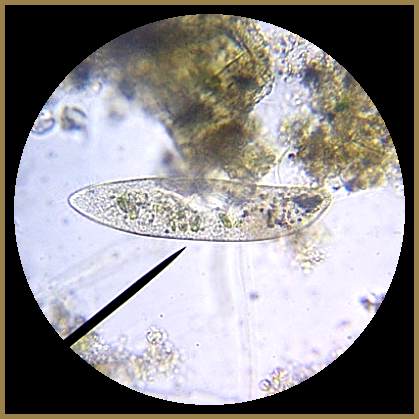


Paramecia have a weapon defense system that they deploy against their enemies. When attacked, they release dart-like objects from capsules located on their undersides. It usually works, however, it is completely ineffective against the Paramecium's most deadly enemy - the Didinium. The Didinium simply forges ahead, undeterred, gulping down as many as two Paramecia a minute.
The second image shows a bit more clearly the water expelling vesicle of the Paramecium (sometimes called the "contractile vacuole"). Through a complex metabolic process, excess water from the animal's cytoplasm is drawn into the vesicle and expelled as waste matter. A trapdoor at the opening of the vesicle opens and closes to contain the vesicle's contents until the pressure inside forces it open. Truly remarkable behavior - the breathing and excretory functions of a multi-celled animal with complex organ functions - but all occurring within just one "organless" cell. See the section on "Size" for an animation of the Paramecium's vesicle, and the section on "Interesting Facts" accessible from the bottom of the Image Index Page for more amazing oddities of the Paramecium.